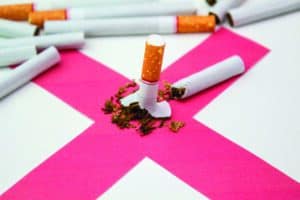Residents of Colorado are more susceptible to skin cancer. Nationally, almost 20 out of 100,000 people will get skin cancer every year, according to the Colorado Health Institute. However, in Colorado, that figure rises to more than 21 out of 100,000 residents.Wherever one lives, the key to keeping skin cancer from spreading or worsening is early detection. ìIf you catch it early, you can save your life,î said Dr. Vinh Chung of Vanguard Skin Specialists, a dermatology and plastic surgery practice in Colorado Springs.ìEarly diagnosis, early treatment, early cureî is Chung’s motto.The Mayo Clinic states that skin cancer develops primarily in areas of the skin exposed to the sun, including the scalp, face, lips, ears, chest and arms. The Colorado Cancer Coalition states it is a myth that a ìbase burnî will provide protection from sunburn; and, a ìbase tanî is not a safe tan.ìThere are two reasons for the larger number of skin cancer cases in Colorado,î Chung said. ìIn Colorado, we get 300 days of sunshine a year. Also, we are higher up and closer to the sun. We are exposed to more radiation from the sun, and we have about 1 mile less atmospheric thickness to protect us from the sun.î Pilots and flight attendants are also more susceptible to skin cancer because they work at high altitudes closer to the sun, Chung said. According to the Colorado Cancer Coalition, people with lighter skin and blue/green eyes or blond/red hair are also more sensitive to skin cancer.For those reasons, Chung said all Coloradans should be aware of the symptoms of skin cancer and check themselves regularly for those symptoms. The good thing about skin cancer is that it is external; and, unlike other forms of cancer, people can recognize the signs themselves.Warning signs include sores that bleed and do not heal, but ooze and crust over. Coloradans should also be on the lookout for moles that rapidly grow and have irregular edges. Chung said men generally are not concerned about skin cancer. It is their wives who notice the signs and ask their husbands to get examined. When people come in for an examination, Chung said he looks over their bodies and feels any bumps and asks if they are stable or growing. If a spot looks suspicious, he will do a biopsy to determine if the growth is cancerous.Basal cell carcinoma is the least dangerous form of skin cancer, Chung said. Squamous cell carcinoma is more dangerous and can potentially disfigure a person and also result in death. Melanoma is the most life-threatening and the most fatal.The American Cancer Society states that although melanoma makes up about 1% of all skin cancer diagnosis, it is responsible for the majority of deaths from skin cancer because of its ability to spread to other parts of the body.Chung said anyone who has a family history of melanoma should get a baseline check. Also, anyone, especially in Colorado, should get a check when they reach 35 to 40 years of age, he added. That checkup will determine the need and frequency for follow-up visits. Once a person has melanoma, they should be checked every four to six months for five years and then once a year after that. A person diagnosed with squamous cell carcinoma should be rechecked in six months.When asked if skin cancer spreads to other areas of the body, Chung said, ìIt all depends on the type of cancer and other critical findings. If someone has a melanoma on the back and we find enlarged lymph nodes, we can perform a biopsy of the lymph nodes and a PET scan to determine if the melanoma has spread. If someone has a basil cell carcinoma on the left cheek and then we find another basil cell carcinoma on his right cheek, this is most likely a separate skin cancer.îPrecancerous growths can be burned off with liquid nitrogen. If there is extensive damage, a chemotherapy cream can be used as well.To avoid skin cancer, Mayo Clinic lists the following:
- Avoid the sun between 10 a.m. and 4 p.m. ó the peak hours of sun strength in North America, even in the winter and on cloudy days.
- Wear sunscreen ó at least SPF 15 ó throughout the entire year. Reapply sunscreen every two hours, or more frequently if you are swimming or sweating.
- Wear protective clothing. Hats with wide brims and clothing that covers arms and legs are helpful. Sunscreen doesnít block all UV rays ó the cause of skin cancer.
- Avoid tanning beds. Tanning beds operate with UV lights, causing skin damage and often cancer.
- Always do a self-check of the skin and be aware of anything different or suspicious.






